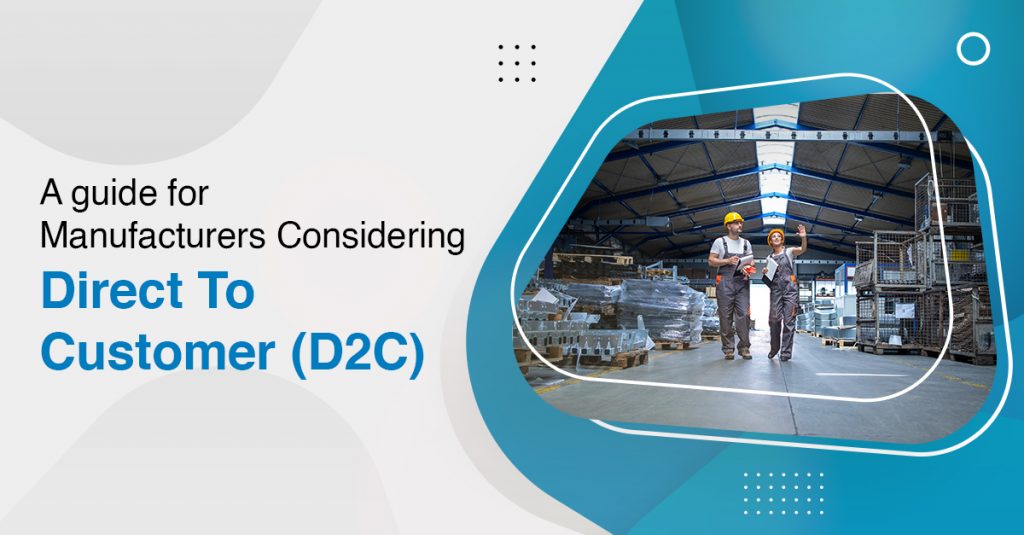Manufacturers can make the most of the exciting opportunity to augment distributor networks with their own digital commerce site. Choosing direct to customer (D2C) approach helps build long-lasting relationships with brands that customers crave.
And when done right, D2C can help to boost business growth. Studies show that more than half of people who visit a manufacturer’s website, intend to make a purchase. But before going direct-to-consumer (D2C), you should know that it comes with a lot of questions as you shift focus away from a strictly B2B model.
Tips for Manufacturers Going Direct to Customer
Let’s learn about some important tips that could help manufacturing companies make an easy move to the Direct To Customer (D2C) model.
1. Complement Existing B2B Partnerships
Do some research to find potential channel conflicts and think about ways that could help you minimize them. It is important that you communicate your goals and D2C strategy with existing distribution partners ahead of time so you can strategize it all together. It will help to open the door to working together in new ways, gathering great ideas to reimagine channel management strategies, and building new partnerships.
When going D2C, these approaches can be helpful to you:
- You can establish a market development fund
- Work on having a special product line available on your site for purchase with access to selected partners
- You can offer the exclusive ability to discount from the manufacturer’s suggested retail price (MSRP) to certain distributors
- Emphasize more on adding relevant content on your D2C sites. You can include a store finder or detailed product information that can help consumers make purchase decisions easily.
2. Follow a Customer-Centric, Brand-First Approach
It is the content and experiences that help to bring consumers closer to your brand. Every measure you take should support the consumer journey. From discovery through loyalty, you should follow regular, personalized engagements that resonate with customers.
Your D2C channel will act as your hub to conduct engagements. You have to record and manage detailed product histories for each customer, descriptions, and how-to videos that could be helpful for customers.
3. Deepen Relationships with Continued Engagement
The customer expectations keep changing, you need to make continuous efforts to meet those. Keep Innovating continuously so your engagements meet consumer and market needs in a better way.
- Content: Make sure to keep delivering a steady stream of high-quality content on your social, website, email, and SMS channels. You can choose to mix product imagery with content that positions your brand as a trusted authority. This can include tutorials and how-to videos.
- Customer service: You can choose to empower consumers by using self-service options. It could help customers find answers to their common questions by themselves through FAQs and chatbots. If any case is too complicated and can’t be resolved by the customer, the bot will escalate it to an agent for necessary support.
- Personalization: You can also leverage artificial intelligence (AI) to personalize e-commerce experiences at scale. AI will help you to determine the behaviors of each consumer and shows them relevant content. This will increases the chances of them making a purchase.
Go Direct to Customer with Certified Salesforce Experts
Moving to the D2C approach van be a crawl-walk-run approach but it will all be worth it when it will keep bringing more value to the company. Just plan the Direct to Customer or D2C strategy right with certified experts.
Safely make the transition with our certified Salesforce professionals. Get in touch with our experienced Salesforce professionals to learn more about our services for the manufacturing industry.
